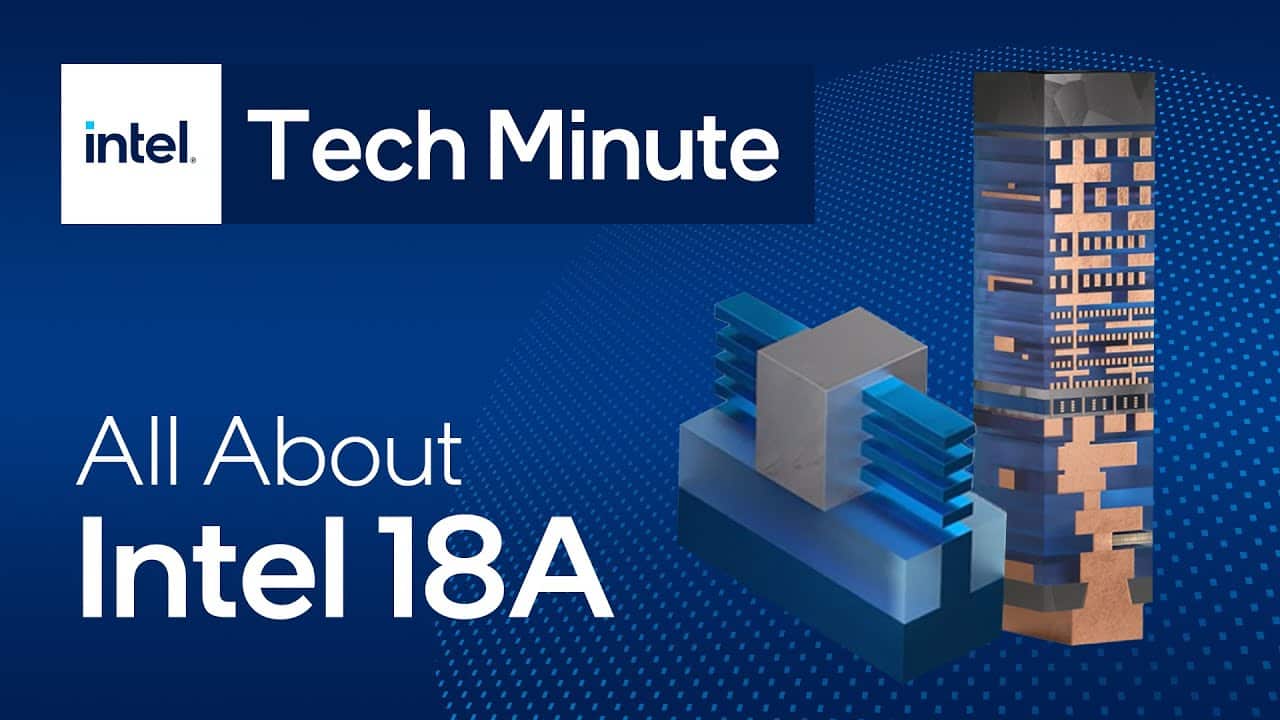The company, which suffered its first annual net loss since 1986, is seeking to regain competitiveness against TSMC by focusing its roadmap on the 14A node.
Intel Corporation may make a drastic shift in its chip manufacturing strategy, contemplating the abandonment of external commercialization of its 18A process—one of its most ambitious developments in advanced nodes—to focus exclusively on its 14A technology, according to Reuters citing internal sources.
Since Lip-Bu Tan took over as CEO in March 2025, replacing Pat Gelsinger, the priority has been to contain costs and redefine the business approach following a disastrous fiscal year in 2024, during which Intel recorded a net loss of $18.8 billion, its first since 1986. Among the measures being considered is a partial withdrawal from the 18A node, a decision that could entail accounting write-downs amounting to hundreds or even billions of dollars, given the investment involved.
From 18A to 14A: A Paradigm Shift
The 18A node (approximately 1.8 nm) has been the flagship of Gelsinger’s strategy to compete with TSMC and Samsung Foundry. However, since June, Tan has begun to express reservations about the commercial viability of the process due to a lack of uptake from external customers. Although Intel will continue to produce chips using 18A for its own products—such as the Panther Lake processors expected by late 2025—and will fulfill commitments to Amazon and Microsoft, abandoning 18A as a widely available foundry service would mark a turning point.
At the same time, Intel has two evolved versions on its roadmap: 18A-P for 2026 and 18A-PT for 2028, although their continuation may depend on market reception and the performance of the 14A node.
The 14A process, which represents a subsequent generation (and potentially more competitive in cost-performance), is now Intel’s major bet to attract high-profile customers like Apple or NVIDIA, who currently rely on TSMC to produce their most advanced chips. This new direction could revitalize the position of Intel Foundry Services (IFS), the division responsible for manufacturing chips for third parties.
Financial Implications and Comparison with TSMC
Partially abandoning 18A would result in significant losses, but it could also free up resources to accelerate development and production in 14A, where Intel believes it can compete more efficiently. The goal is to optimize margins and capture market share in a sector where TSMC holds a clear advantage.
On the stock market, Intel has shown a partial recovery in 2025, after hitting rock bottom in 2024. Intel’s stock (INTC) closed on July 2 at $34.18, with a year-over-year decline still showing at -12%, compared to the robust performance of TSMC (TSM), which traded at $168.40 with a year-on-year increase of +28%.
In euros, Intel’s stock is currently equivalent to €31.81, while TSMC’s stands around €156.60, based on the USD/EUR exchange rate of 0.93 (updated on July 3, 2025). This difference reflects not only the size and technological leadership of TSMC but also the market’s perception of the robustness of their technological roadmaps.
| Company | Ticker | Price (USD) | Price (Approx. €) | Year-Over-Year Change |
|---|---|---|---|---|
| Intel | INTC | $34.18 | €31.81 | -12% |
| TSMC | TSM | $168.40 | €156.60 | +28% |
Source: Yahoo Finance, reference exchange rate USD/EUR = 0.93
Next Steps and Final Decision
Intel will present various options to the board of directors this month, although a final decision is not expected until the fall. The company has chosen not to comment on “market speculation,” but has reiterated its commitment to “strengthening the roadmap, regaining customer confidence, and improving financial conditions.”
This potential rollback concerning 14A could represent a return to a more conservative approach focused on ensuring profitability, following years of aggressive investments in cutting-edge processes that have yet to scale into mass production.
Conclusion
Intel finds itself at a critical crossroads. The future of its foundry business—and, by extension, its global position in the semiconductor market—will largely depend on whether it can make 14A a viable alternative to TSMC’s more advanced nodes. In a context marked by the race for technological supremacy, this decision affects not only Intel but also the balance of power across the global chip industry.
via: techpowerup

